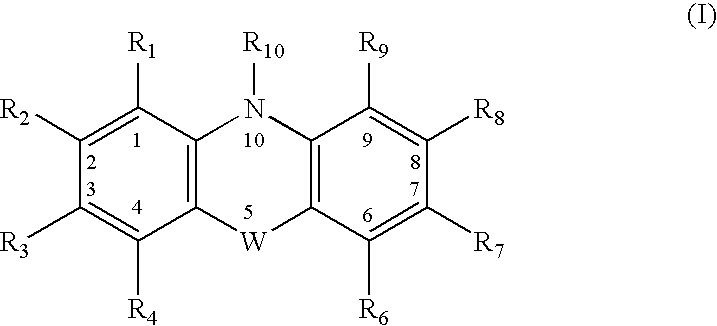Combinations of drugs for the treatment of neoplastic disorders
a technology for neoplastic disorders and combinations of drugs, applied in the field of neoplastic disorders, can solve the problems of clogging healthy tissue, destroying healthy tissue, and abnormal cells no longer doing the work of normal cells, so as to relieve symptoms, slow the spread of cancer, and slow the growth of cancer
- Summary
- Abstract
- Description
- Claims
- Application Information
AI Technical Summary
Benefits of technology
Problems solved by technology
Method used
Image
Examples
example 1
Preparation of the Chlorpromazine / Pentamidine Isethionate Dilution Matrix
[0097] Stock solutions of chlorpromazine and pentamidine isethionate (Sigma catalog number C8138 and P0547, respectively) were made in dimethylsulfoxide (DMSO) at concentrations of 11.25 mM and 6.74 mM respectively. An 8× stock solution (128 μM) of each individual compound was made in Dulbecco's Modified Eagle Medium (DMEM) (Gibco 11995-040) containing 10% fetal bovine serum (FBS), 200 mM L-glutamine, and 1% antibiotic / antimycotic solution. From this a 2-fold dilution series was made in DMEM. This series provided 9 concentrations ranging from 64 μM to 240 nM and one concentration of 0 M. The compound mixture matrix was prepared by filling columns of a 384-well plate with the dilution series of chlorpromazine (first column: 32 μM; second column: 16 μM; third column: 8 μM; fourth column: 4 μM; fifth column: 2 μM; sixth column: 1 μM; seventh column: 500 nM; eighth column: 250 nM; ninth column: 125 nM; and tenth c...
example 2
Assay for Antiproliferative Activity
[0098] The compound dilution matrix was assayed using the A549 bromodeoxyuridine (BrdU) cytoblot method. Forty-five micro liters of a suspension containing A549 lung adenocarcinoma cells (ATCC# CCL-185) was seeded in a white opaque polystyrene cell culture treated sterile 384-well plate (NalgeNunc #164610) using a multidrop (Labsystems) to give a density of 3000 cells per well. Fifteen microliters of the 4× compound mixture matrix was added to each well of the plate containing the cells. The compound mixture matrix was transferred using a 16-channel pipettor (Finnpipette). In addition, control wells with paclitaxel (final concentration 4.6 μM), podophyllotoxin (9.6 μM), and quinacrine (8.5 μM) were added to each plate. Each experiment was conducted in triplicate plates.
[0099] After incubation for 48 hours at 37° C., BrdU was added to each well at a concentration of 10 μM. After 16 hours, the media was aspirated and the cells were fixed by the ad...
PUM
| Property | Measurement | Unit |
|---|---|---|
| concentrations | aaaaa | aaaaa |
| concentrations | aaaaa | aaaaa |
| strength | aaaaa | aaaaa |
Abstract
Description
Claims
Application Information
 Login to View More
Login to View More - R&D
- Intellectual Property
- Life Sciences
- Materials
- Tech Scout
- Unparalleled Data Quality
- Higher Quality Content
- 60% Fewer Hallucinations
Browse by: Latest US Patents, China's latest patents, Technical Efficacy Thesaurus, Application Domain, Technology Topic, Popular Technical Reports.
© 2025 PatSnap. All rights reserved.Legal|Privacy policy|Modern Slavery Act Transparency Statement|Sitemap|About US| Contact US: help@patsnap.com



